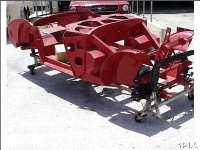Hi John,
Scuttle shake seems to be a general term applied to cars, especially Healeys. True scuttle shake is vibration of the scuttle (cowl) & dash when going over rough road surfaces. It is often used to describe any vibrations in the body, especially in the front sections.
Any topless car is subject to more body flexing when traveling over rough surfaces due to the lack of a supporting top structure. The panels on an open top box obviously can flex more than if the top of the box were closed.
The Healey with it's semi uni-body construction is considerably more rigid than separate frame-body designs. Some of the other un-named brands with separate frame-body construction are notorious for chassis flexing. When one end is jacked up the doors will bind so that they can't even be opened.
Later model Healeys 4 seaters are more subject to body flex than the old two seaters. This is likely because of the increased wheel base, body length, & larger open area on the top of the box.
Flex on all of the models can be greatly increased by thinning/weakening of the original inner body, floor, frame structure, caused by rust. Many cars that look perfect on the outside have rust weakened inner structural parts. The Healey structural components were thick enough to resist most flexing when in new condition, but just barely. Any thinning - weakening of original metal results in more than the intended design flex. This is the main reason that a good Healey restoration may cost much more than it would on some other cars.
A "sound" Healy should permit jacking under any frame/suspension corner without any changes to door or panel gaps. Jacking under a side frame member should not open the top door to body gaps. A good test for overall soundness of the frame & underlying body structure.
Several other problems can contribute to body vibration that "may" be called scuttle shake although they show up at certain speeds & are not necessarily related to rough road surfaces. Some of the causes are unbalanced or out of round wheels or tires, out of balance brake drums (fairly common on the later models), weak shock absorbers, & loose suspension parts.
Various remedies such as reinforcing the area around the forward transmission tunnel to firewall to stiffen up the box opening have been known to help.
If a car passes the corner jacking test it is unlikely to have serious underbody-frame weakening. The only "real" cure for flexing is to remove the body panels & most everything else & replace the structural members with new metal.
As a note of interest, I recently added a very solidly mounted hardtop to my BN2. Although the car is pretty solid & flex free, there is a slight but noticeable increase in body rigidity.
ATTACHED is a pic of a Healey chassis. All of the parts shown are welded into one piece. The body panels are mostly just hung on this structure & don't contribute much to overall rigidity.
The above is my take on the problem, others may not agree,
D

 Hi Guest!
Hi Guest!

 smilie in place of the real @
smilie in place of the real @
 Pretty Please - add it to our Events forum(s) and add to the calendar! >>
Pretty Please - add it to our Events forum(s) and add to the calendar! >> 

